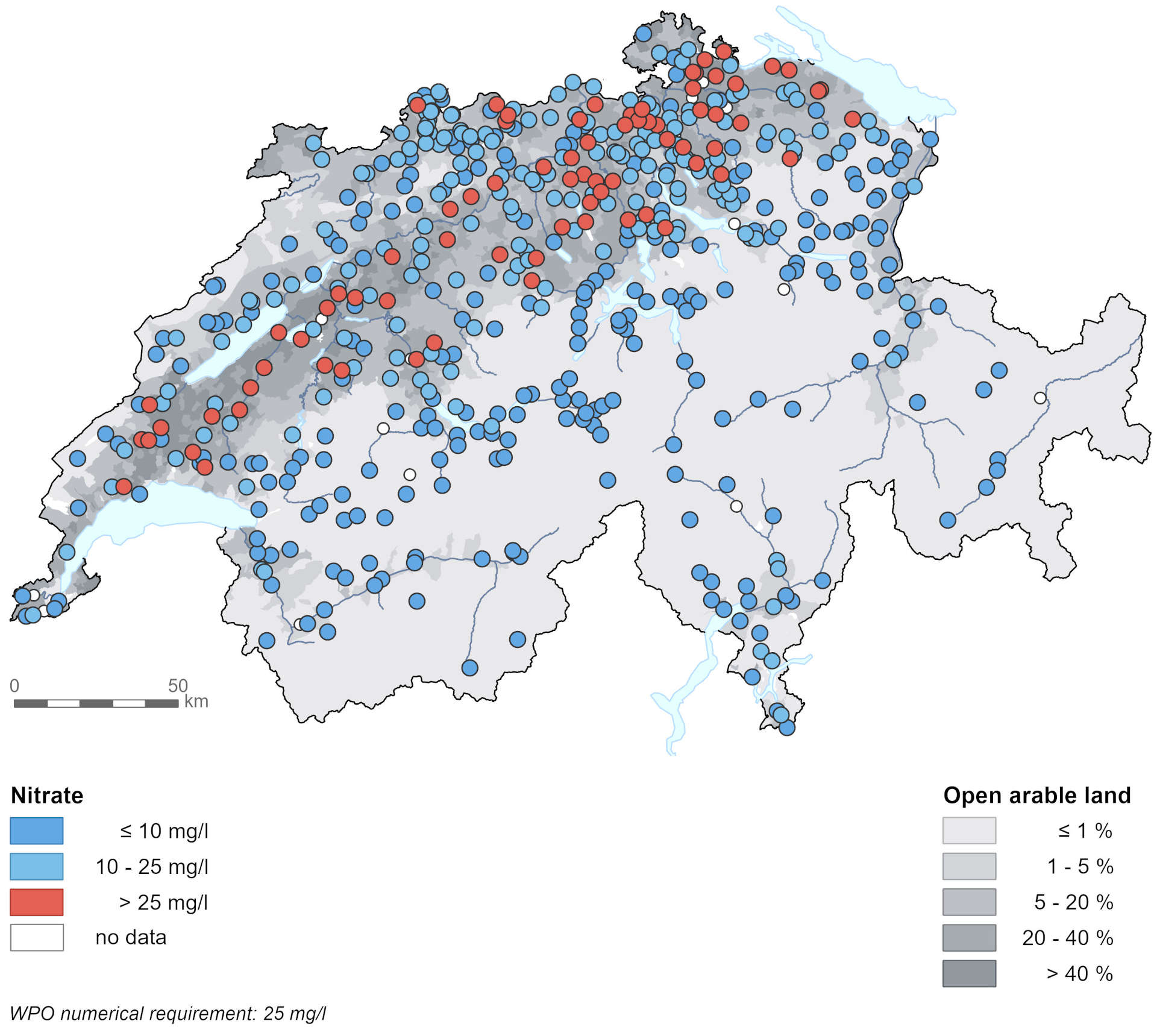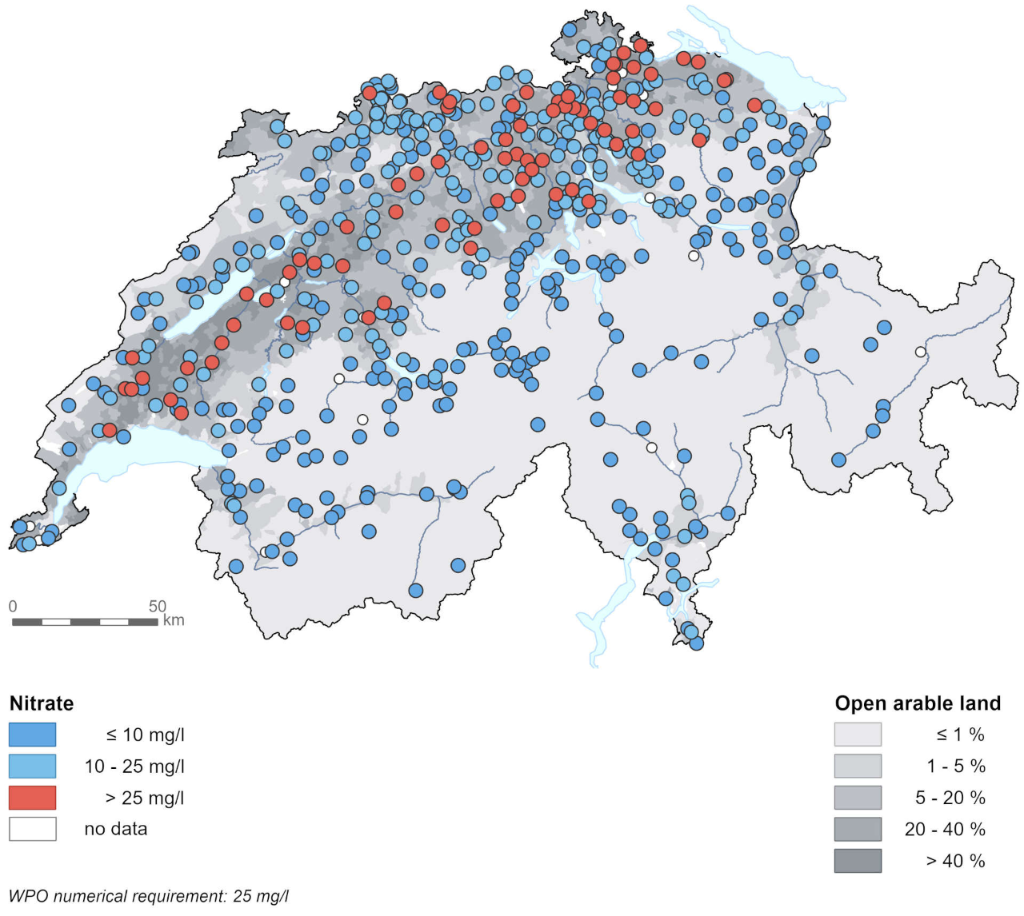Nitrate exceeds the limit value of 25 mg/l in groundwater at 15% of monitoring sites across Switzerland. In areas where arable farming is predominant, concentrations are above the limit at nearly 50% of monitoring sites.
Groundwater contains very little nitrate naturally. For groundwater used for drinking water or intended for such use, the Waters Protection Ordinance (WPO) prescribes a limit value ('numerical requirement') of 25 milligrams per litre (mg/l). In the last ten years, this limit has been exceeded at up to 18% of NAQUA National Ground Monitoring sites nationwide.
Frequent exceeding of the limit value in arable farming areas
Elevated nitrate concentrations in groundwater are mainly due to intensive agriculture. In areas used primarily for growing arable crops or vegetables, close to 50% of monitoring sites exceed the limit value of 25 mg/l. On the Swiss Plateau concentrations are above 10 mg/l at around 80% of monitoring sites.
After a slight decline of the number of monitoring sites exceeding the limit value in groundwater during several years, this number increased again between 2016 and 2021. This increase was particularly pronounced in areas with vegetable crops and arable land, where there is a lot of excess nitrogen in the soil. In these areas, levels have increased for five years in a row.
Both hydrological and various agronomic factors are possible drivers of the increase of the nitrate concentrations under cropland. Clarifications are underway.
Further information
Documents
Zustand und Entwicklung Grundwasser Schweiz
Last modification 03.05.2024







